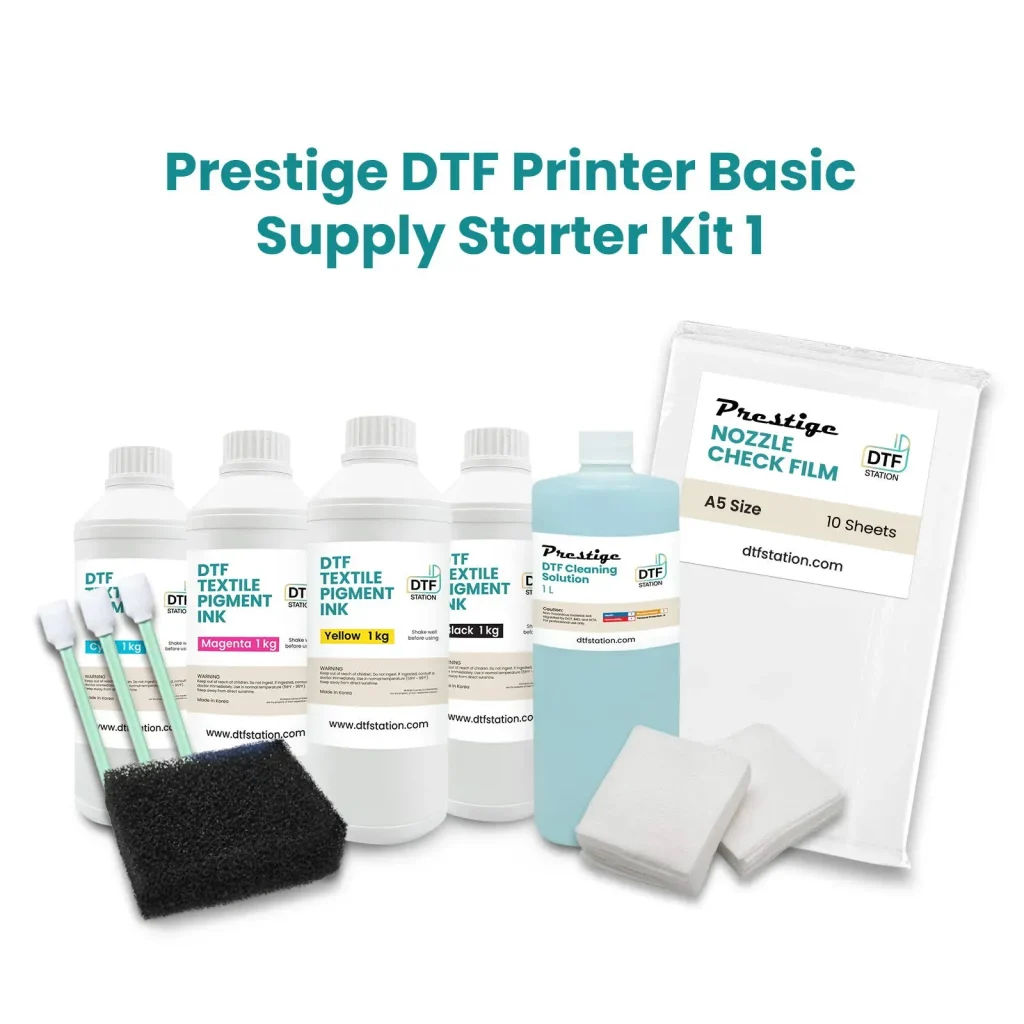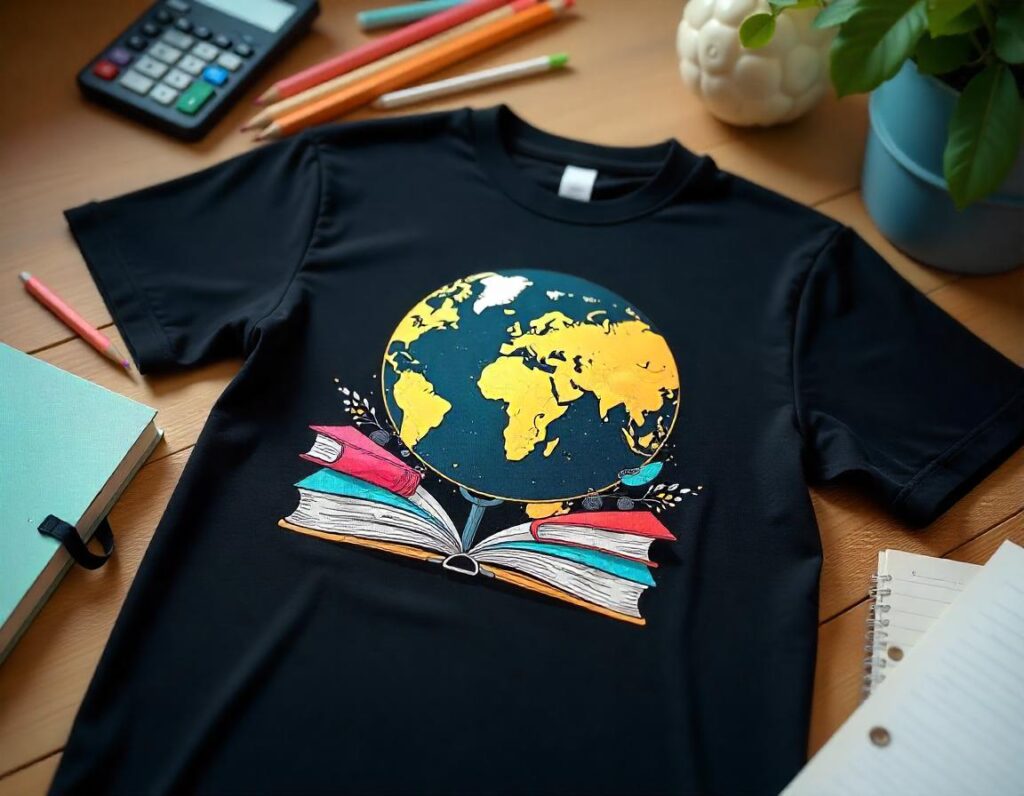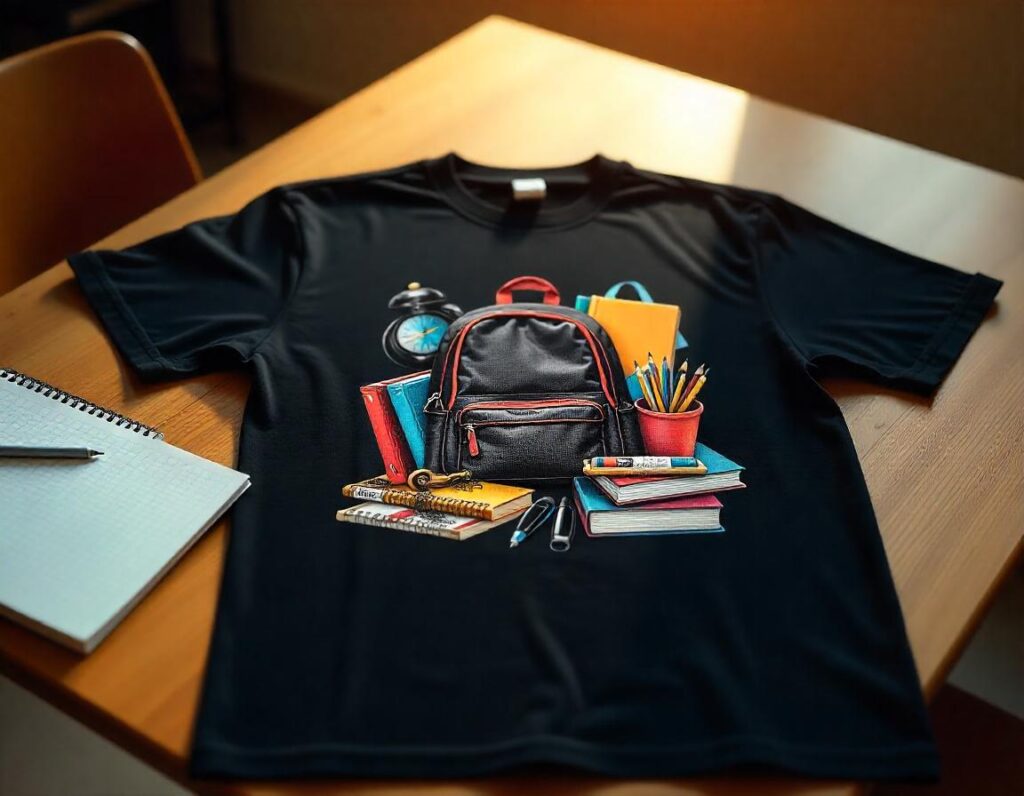DTF supplies are crucial in the dynamic world of Direct-to-Film printing, a technique that has transformed how designs are applied to various materials. By using high-quality DTF inks, special transfer films, and a reliable heat press, you can achieve vibrant, long-lasting prints that cater to all sorts of creative projects. This guide is focused on helping you navigate the essential items needed for successful DTF printing and ensuring that each print meets remarkable standards of quality. From adhesive powders that guarantee adhesion to precision heat presses that ensure a perfect transfer, the right DTF supplies make all the difference. Join us as we dive into the must-have items and best practices that will elevate your printing game to the next level.
In the realm of garment and substrate decoration, utilizing the right tools for Direct-to-Film printing is indispensable. Known as DTF printing, this innovative process involves using specialized inks and transfer films to create intricate designs on various surfaces. Key components such as marketed printing inks, adhesive powders, and consistent heat application through heat press machines are essentials worth understanding. By familiarizing yourself with these supplies and their functions, you can streamline your workflow and enhance the overall quality of your output. Their cumulative impact determines the success of your projects, transforming basic items into masterpieces.
Understanding the Importance of Quality DTF Inks
When it comes to achieving vibrant and lasting prints in DTF printing, the quality of your inks is paramount. DTF inks are specially formulated to provide brilliant colors and seamless adhesion to transfer films, ensuring that designs come out as intended. It’s essential to choose inks that not only work well with your specific printer but also match the intended substrates you’ll be printing on. High-quality DTF inks can prevent common issues such as fading, smudging, or uneven coating, which can compromise your overall print quality.
Selecting the right DTF inks often involves consideration of various factors, including color accuracy, ink viscosity, and compatibility with your heat press process. Inks that are too thick can cause clogging in the printer, while those too thin may lead to poor coverage and vibrancy. It is beneficial to conduct test prints with various inks to determine which yields the best results for your designs, creating a more predictable outcome for your DTF projects.
The Role of Transfer Film in DTF Printing
Transfer film acts as a carrier for the DTF ink from the printer to the substrate, making it a critical element in the DTF printing process. The type of transfer film you choose can significantly influence the final aesthetic of your print. Quality semi-transparent films provide a smoother surface for ink application and ensure the colors remain true to your designs. Investing in good transfer film can transcend beyond mere aesthetics, as thicker films often enhance durability and ensure your designs withstand the test of time.
Moreover, the compatibility of the transfer film with your DTF inks is crucial for achieving optimal results. Improper film selection can lead to printing defects, such as poor ink adhesion or uneven application. Thus, it’s advisable to review manufacturer recommendations. A properly selected transfer film not only amplifies color vibrancy but also boosts the overall reliability of the DTF printing process, making it essential to include this step in your quality control checks.
Choosing the Right Adhesive Powder
Adhesive powder is an often-overlooked component of the DTF printing process, but it plays a fundamental role in ensuring successful transfer and longevity of designs on various fabrics. After printing your designs, applying the adhesive powder ensures that the print adheres firmly to the substrate during heat transfer. Selecting the right adhesive powder can mean the difference between a design that falls apart after a few washes and one that looks fresh for years.
Consider the texture and composition of the adhesive powder; options that are finer often provide a more even coating and better adhesion without creating a bulky feel once transferred. Additionally, it’s crucial to use adhesive powder that melts well during the curing process. This guarantees that your designs are properly bonded to the fabric, allowing for flexibility and durability, which is especially important when working with garments that will undergo regular washing.
Essential Features of an Effective Heat Press
A reliable heat press is pivotal in ensuring that your DTF designs are transferred efficiently and effectively. The mechanism it uses to apply consistent heat and pressure is essential for a successful transfer. Look for heat presses with adjustable temperature settings and digital controls to enhance accuracy. Getting the settings right is crucial, as incorrect temperatures or pressures can lead to incomplete transfers or damage to your prints.
Moreover, different fabrics may require distinct pressure and temperature settings; hence having a heat press that is versatile is beneficial. Features such as a timer and automatic shut-off are also advantageous, as they help avoid overexposure, which could ruin your designs. With the correct heat press, you can ensure that every print achieves optimal adhesion and durability, crucial for customer satisfaction and business success.
Best Practices for Maximizing Print Quality
Maximizing print quality in DTF printing entails more than simply having the right tools; it requires following best practices throughout the entire printing process. Compatibility between DTF inks, transfer films, and adhesive powders is vital, as using mismatched materials can yield subpar results. Regular maintenance of your printer and heat press, ensuring they are clean and in good working order, will also help maintain high print quality and reduce the risk of errors.
In addition, conducting test prints before starting a large batch is an excellent practice. Test prints allow you to adjust your settings for temperature, pressure, and even ink flow without wasting materials. Coupled with color calibration tools, you can ensure that every print meets your quality standards before they reach customers. Implementing these strategies will place you on a path of consistent quality assurance that will ultimately enhance your brand’s reputation.
Staying Informed on DTF Printing Innovations
The DTF printing landscape is continually evolving, introducing new materials and techniques that can significantly improve print quality and efficiency. By staying informed about the latest innovations, such as new types of DTF inks, enhancements in transfer films, or advancements in printing technology, you can further elevate the quality of your work. Regularly reviewing industry newsletters, attending workshops and trade shows, or participating in online forums will help keep you updated.
Engaging with fellow professionals in the DTF community can also provide insights into best practices and troubleshooting techniques that can optimize your process. As new products emerge to improve the quality of DTF printing supplies, staying up-to-date can enable you to continually refine your work and offer your clients the highest-quality prints available. Embracing knowledge-sharing will equip you with tools to maintain a competitive edge in the printing industry.
Frequently Asked Questions
What are DTF inks and why are they important for DTF printing?
DTF inks are specially formulated inks used in Direct-to-Film printing. They are designed to produce vibrant colors and ensure excellent adhesion when printed on transfer film. Quality DTF inks are essential for achieving high detail and durability in prints, making them a vital part of your DTF supplies.
How do I choose the right transfer film for DTF printing?
Choosing the right transfer film for DTF printing is crucial for achieving optimal results. Look for semi-transparent films that are compatible with your printer model and provide excellent print quality. The right transfer film enhances color vibrancy and detail in your designs, ensuring a successful transfer process.
What is adhesive powder and how does it work in DTF printing?
Adhesive powder is a crucial component in the DTF printing process. After printing your design on transfer film, you must apply adhesive powder before curing it. This powder bonds your printed design to the fabric, ensuring durability and longevity. Selecting a high-quality adhesive powder ensures a strong, reliable bond in your DTF projects.
What should I consider when purchasing a heat press for DTF printing?
When purchasing a heat press for DTF printing, consider features such as adjustable temperature and pressure settings, as these are vital for successful transfers. Look for a reliable heat press that can handle various materials, as different fabrics may require different settings to achieve optimal adhesion and print quality.
Why is it necessary to conduct test prints before large DTF printing runs?
Conducting test prints before large DTF printing runs is necessary to calibrate colors and settings accurately. Test prints help identify any potential issues early in the process, ensuring that you achieve high-quality prints and saving time and resources by preventing major errors during larger production runs.
How can I maintain my DTF printing supplies for optimal performance?
To maintain your DTF printing supplies for optimal performance, regularly clean your printer and heat press to prevent ink clogs and printing defects. Additionally, check the compatibility of your DTF inks, transfer films, and adhesive powders. Regular maintenance helps ensure consistent quality in your prints and prolongs the lifespan of your equipment.
| Key Point | Details |
|---|---|
| DTF Printing Overview | DTF printing uses PET films to transfer designs to garments, offering advantages over traditional methods. |
| Advantages of DTF Printing | Includes versatility, high detail, and durability of prints. |
| Essential Supplies | Critical items include DTF inks, transfer film, adhesive powder, heat press, and specific printers. |
| Best Practices | Ensure compatibility of supplies, adjust settings, follow DTF process accurately, conduct test prints, and maintain equipment regularly. |
| Staying Updated | Keep informed about the latest developments in DTF technology and products. |
Summary
DTF supplies are essential for achieving high-quality prints in Direct-to-Film printing. By investing in the right materials such as DTF inks, transfer films, and adhesive powders, along with utilizing proper equipment like heat presses and printers, you can create vibrant and lasting designs. Understanding the process and adhering to best practices can maximize the effectiveness of these supplies. As the industry evolves, staying updated with new techniques will enhance your capabilities, ensuring you deliver impressive results for your clients. Equip yourself with comprehensive DTF supplies to perfect your craft and stand out in the competitive printing landscape.



